And like many of the most impactful technologies of the twentieth century, today’s RFID technology evolved from wartime innovations and practical, real-world experiments by practitioners, not researchers.
The 1940s: From battlefield jerry-rigging to promising new frontier
During World War Two, German pilots noticed that if they rolled their planes in certain patterns when returning to base, they could alter the signal received by their radar technicians. If those techs knew what to look for, those radar wobbles identified the German planes as friendly blips, not incoming Allied fighters. That was the first recorded use of radio frequencies for identification. What we today in more formal use cases call passive RFID.
Word of this battlefield improvisation quickly spread, and scientists and engineers worldwide began understanding the potential. So in the post-war years, British military researchers set out to create a purposeful ‘identification: friend or foe’ (IFF) signal system for their air force using RFID. The descendants of those original IFF systems are still used today by air forces worldwide.
Late 20th Century: Consumerism drives RFID’s jump to business technology
The IFF systems were 1-bit RFID signals. In other words, they were either on or off, yes, I’m friendly or no, I am a foe. In the 60s, just as military engineers quickly saw the potential in jerry-rigged battlefield signaling, business leaders saw the potential in identification tags that could instantly transmit a 1-bit yes or no signal.
One of the first commercial applications for passive RFID tags, which is still widely applied today, is anti-theft tags. These surveillance tags can either be off for “paid” or on for “unpaid.” If a tag attached to merchandise set to unpaid passes by a store’s exit scanner, an alarm will sound.
More and more applications emerged in the 1970s and 80s, and RFID technology became popular enough for global standards to emerge. For example, the US military desperately needed to know when and where trucks carrying nuclear weapons moved. So they commissioned a research team to develop RFID vehicle tags to achieve that.
And as industrial farms expanded to feed the world's growing population, farm leaders realized they needed better methods for tracking livestock. Then, as today, cows received RFID trackers either as ear tags or, later, as capsules embedded in their hide.
The 1990s to Today: RFID & the Internet
The standardization and commodification of RFID tags led rapidly to innovations and miniaturization. Costs fell along with miniaturization, and by the beginning of the twenty-first century, miniature RFID tags could be attached or embedded in practically anything.
All this happened at the same time the Internet emerged and revolutionized business and society. Today, leading businesses rely on their digital transformation to help give them an edge—the networking and connecting of all their distributed business systems. Internet of Things (IoT) and RFID sensors embedded in materials and business equipment generate mountains of data that companies want to turn into new business insights. RFID tracking systems are at the core of this movement.
So in just a few short decades, radiofrequency identification went from a battlefield novelty to an important but uninteresting business tool to the cornerstone of the most exciting business initiative underway in the world today. These humble little tags have a fascinating history.
Learn More
- The RFID Journal: A History of RFID Technology
- RTN: Active vs. Passive RFID Technology: How to Choose the Right Tracking Tech

